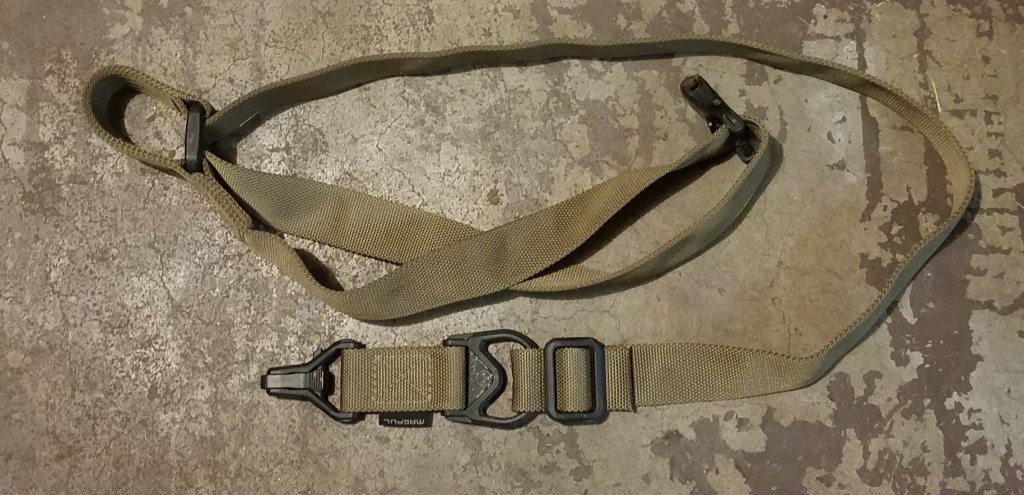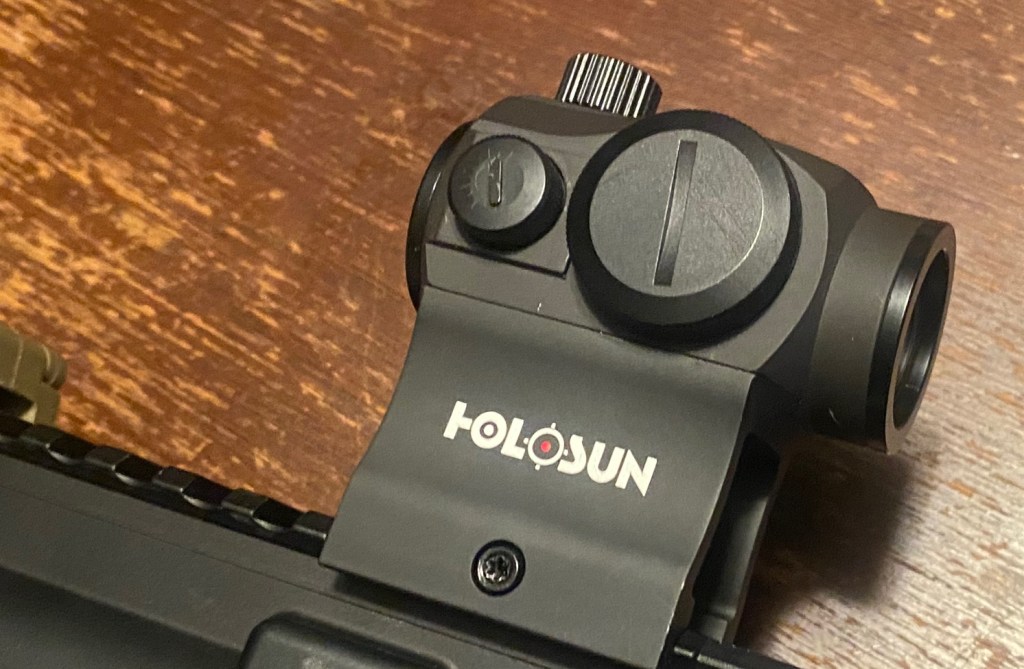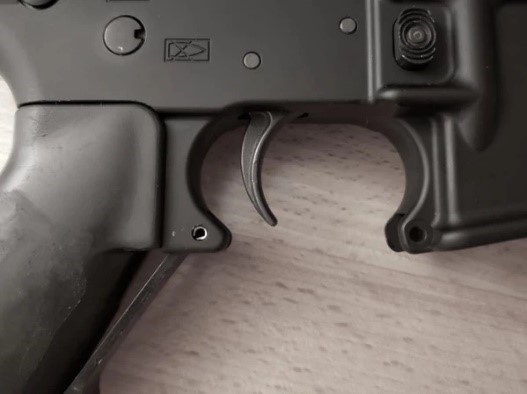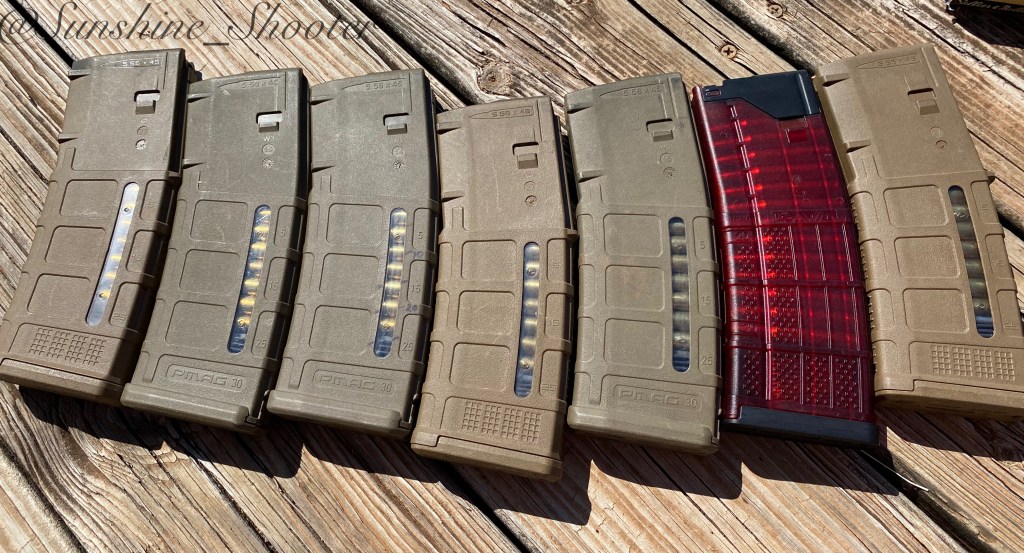You just bought an AR-15. Congrats! Welcome to the club. Now what? Well, that’s what we’re here to talk about. Before we jump in, we need to lay down our starting condition
Who is This For?
This guide is meant for someone who just bought their first AR and is considering using it for home defense. If you have owned a fighting rifle for a few years, or you intend for this gun to be a range toy or competition rig, this post isn’t geared towards you. If you are brand new to the AR ecosystem, or guns in general, you’re in the right place.
I’m going to try to explain first why a given upgrade is important and why you should pursue this specific upgrade sooner instead of later. Now, let’s get into it.
#1: White Light

This is the most important upgrade to your rifle, in my opinion: a weapon mounted flashlight. Most upgrades allow the shooter to squeak out a little more performance, or a little more margin for error, or something like that, but not the white light. The white light allows you to accurately identify and engage targets 24-hours a day, under any condition (within the light’s usable range). There is no training required to gain this ability, and no amount of training will allow you to see in the dark without a light. The sheer amount of capability gained by what can cost as little as $30-$40 is unmatched by any other upgrade at any price. The closest rival is night vision, and that only lets you see without other people seeing you, and that’s only if the other team doesn’t also have NV….
In conclusion, there is no reason someone shouldn’t get a white light as their first upgrade. I don’t recommend running a $30 light on your gun for any serious use for any length of time, but that $30 can keep you from smoke-checking your daughter at 3am when you though your were getting home invaded [click here to see how often this happens]. Don’t let the Tactical Timmies confuse you. Get a light on your gun immediately, and upgrade it as necessary later.
#2: Sling

I consider a sling to be an essential piece of equipment for any serious use/fighting gun. A sling is to a long gun as a holster is to a pistol. It allows you to retain the weapon without having your hands full of gun the whole time. The best part is that the sling is always working. A holster only works when you put the pistol into it, whereas the sling is doing its job until you take the darn thing off. Need to grab your toddler and carry him to another room? Your sling will carry your rifle for you until your hands are free. Take a sucker punch and lose your grip on the rifle? The sling’s got you covered. Dude came around a corner you weren’t expecting expecting it and now he’s grabbing your rifle? He’s going to have a tough time taking it since it’s tied to you.
Slings aren’t expensive. They can be, but they don’t have to be. Unlike the white light, $45 can get you a professional level, hard-use-designed option that will never need to be replaced. I don’t make anything from that link, I just like their products. Get a sling, get in the habit of putting it on every time you pick up the gun, and you’ll be much better off. In a pinch, you could even rig up some sort of string that would do the job, albeit uncomfortably. Still need to have a white light first, though.
#3: Red Dot Optic

This is the first add-on that doesn’t actually add capability, so much as remove a barrier to higher skill. Let me explain. Shooting iron sights is not a fundamental aspect of shooting guns. It is merely a way, not the way. A bullet shot from a gun does not care what sighting system was used to line it up, only where it was pointed when it left the barrel. Lots of old timers will say something about how you need to shoot irons first, and then progress to optics. This is pure Fuddlore, and should be treated as such. They had to learn irons first because they didn’t have access to optics, but they don’t realize that it was a matter of available technology not necessarily the best progression of skill.
It’s the same as saying that a person needs to learn how to drive a stick shift before they can drive an automatic, its complete nonsense. Just as shifting gears without stalling the engine is its own skill, learning how to shoot irons is it’s own skill. Its very rewarding, but it is not necessary to shoot a gun well. It is this extra skill that the red dot eliminates the need for. There is no reason to make people learn to shoot irons while also learning to shoot the rifle itself. The new shooter will be trying to learn two brand new skills at the same time, doubling the amount of things their brain needs to keep track of. By eliminating extraneous requirements, a new shooter can focus on getting better with the gun and therefor build skill faster. We can always come back to irons later, and learn those pretty quickly since we already know how to shoot the gun. For brand new shooters, the best way to learn is “…and wherever that dot is, the bullets go.” Simple as.
The reason that I put this upgrade on the list is because it makes shooting much easier and skill building happen faster. The reason its at #3 is because it’s the most pricey and the least necessary upgrade to a brand new gun. If a person had a light, sling, and half an hour of instruction & dry fire, they could probably defend their house adequately from an average, low-level home invader. They won’t be John Wick, but they will have a chance. A red dot is a good start to progressing out of ‘brand new gun owner’-status and into the higher levels of skill.
A red dot is also the most expensive of the first three upgrades I’d suggest. Whereas the first two can be had for under $100 total + shipping (if you don’t leave the store with them on day one), the red dot is a touch pricier. A cheap but good red dot starts around $175 or so. Much less than that and you’re in the territory of options that are so cheap that you waste money. From chasing zeroes, loose internals, and poorly made mounts, I’d recommend no less than $175 for a red dot. Hit up Holosun or Sig for a decent option in that price range. You can always get better later, but unlike the white light, you’re better saving up for a month or two or six and practicing using your light & sling. Hell, even practicing your irons until you can get a dot is better than getting a cheap $45 job that loses zero on the way home from the range.
Runners-Up
A) M-Lock Rail
I do like the M-Lock free float rail as an upgrade. I’ve put an aftermarket rail on all my ARs. It makes mounting the sling and light much easier, along with other upgrades like hand stops and bipods. I do not believe that it brings enough increase in capability to warrant being top-3 though.
B) Better Trigger

Better triggers do make shooting more accurately easier. A good trigger vs a bad trigger can change group sizes from OK to good, but I think that such accuracy gains aren’t where brand new shooters should be investing their time & money. Triggers are expensive and don’t bring a lot of increased capability to the gun, so much as let higher skill level shooters realize their potential.
C) Ammo/Mags/Spare Parts

These are definitely things any serious shooter should have on hand, but they aren’t necessary to win the gunfight you’re going to have. As a non-sworn civilian (our target audience), you’re probably not going to reload your gun mid-gunfight. You’re not going to be in a firefight and shear a lug/break a trigger spring and need to get your gun back up & running before the next wave of attackers comes to your front door. Definitely get that stuff if you want to be serious about owning and knowing your AR, but don’t think that you need it immediately. You’ll know when you need it.
Conclusion
A decent AR is not an insignificant investment. The lowest priced option I would suggest anyone buy is still in the $650-$700 range, so saying something is required before that gun is usable needs to keep that extra cost in mind.
As everyone always says, gear is secondary to skills. To really know what you need, a person needs to get ammo and practice time on the range. Dry fire a lot, shoot a decent amount, and try to find competent sources of info (such as Primary & Secondary, WeLikeShooting, Sage Dynamics, Pro-Gun Millennial, etc.). With a little practice, you’ll start to understand what matters and what doesn’t. What is worth the money, and what seems to be expensive fluff.
With practice and a will to survive, most gear failings can be overcome with few exceptions. One of those exceptions being seeing in the dark. You can’t eat enough carrots or do enough bill drills to see in the dark.
Practice, stay sharp, and we’ll see you next Friday.
-S_S